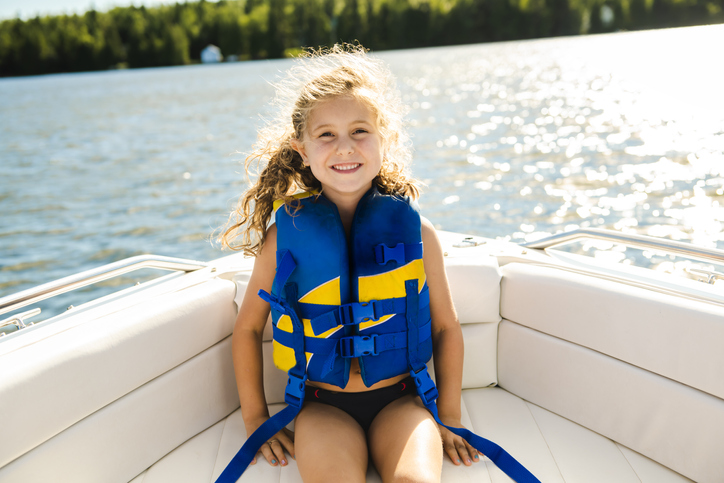New boating rules aimed at saving lives

The state government has announced new requirements for safety on the water.
A four year review into recreational boating safety has produced 23 recommendations to improve the survival rate for people if they get into trouble.
There’s different rules for registered and unregistered vessels but more boaties will be required to wear life jackets and new electronic location devices are just some of the new safety requirements to be introduced.
Life jackets will be mandatory for children aged 12 and under on any vessel operating more than 400 metres off shore in unprotected waters. While the same goes for every person on board a registered boat less than 4.8 metres.
All the recommendations have been accepted by the state government and should be implemented by the end of next year. The Department of Transport will implement a safety education program to raise awareness of the new requirements.
The review doesn’t include surfboards and paddle boards but kite surfers and kayakers travelling more than 400 metres offshore will need to adhere to the updated safety rules.
Speaking with Oliver Peterson, Director of Waterways Safety Management at the Department of Transport Chris Mather said these are the largest amount of changes made since 1992.
“A lot of it revolves a round life jackets,” he said.
“We know that people wearing life jackets who enter the water because their boat has sunk or flipped over have a greater chance of survival.”
Press PLAY to hear Chris Mather explain the new rules further:
Boat, dive and fishing show host Karl Langdon has welcomed the changes, saying they’re “long overdue.”
“Some of the new technology is so much cheaper than it was before,” he said.
Press PLAY to hear more:
More information is available at: http://www.transport.wa.gov.au/safetyequipmentreview
Additional information:
Registrable vessel – means any pleasure vessels, within the meaning of section 98 of the Western Australian Marine Act 1982, which is or may be propelled by mechanical power, including such a vessel which are ordinarily propelled by sail only.
Non-registrable vessel – a non-registrable vessel is not required to be registered with the Department of Transport if they are in or are used in any navigable waters. Includes sailboards, most non-motorised paddlecraft, tenders and sailing dinghies.
Proposals accepted by the State Government:
- A vessel can operate at any distance from the shore regardless of its length.
- It will be mandatory to carry a Global Positioning System (GPS) enabled emergency position indicating radio beacon (EPIRB) on any vessel when operating more than 400 metres from shore in unprotected waters.
- A GPS enabled personal locator beacon may be carried instead of an EPIRB as long as it is worn by at least one person on board at all times when operating more than 400 metres from shore in unprotected waters.
- It will be mandatory to carry two in date hand-held orange smoke flares and two in date red hand-held flares on any vessel operating more than 400 metres from shore in unprotected waters. An approved electronic night signalling device may be carried in lieu of flares, if a GPS enabled EPIRB or PLB is also carried.
- It will be recommended, not mandatory, to carry a fire extinguisher on a vessel.
- It will be recommended, not mandatory, to carry or have fitted a means of removing unwanted water from a vessel.
- It will be recommended, not mandatory, to carry an anchor or line on a registrable vessel or non-registrable vessel.
Registrable vessel specific proposals accepted:
- It will be mandatory to carry an appropriately sized life jacket with a minimum buoyancy of Level 100 (type 1) for each person on board.
- It will be mandatory for each person on board a vessel less than 4.8 metres to wear a life jacket of minimum buoyancy of level 100 (type 1) when operating more than 400 metres from shore in unprotected waters.
- It will be mandatory for each person more than one-year-old and under the age of 12 years on board to wear a life jacket of minimum buoyancy of level 100 (type 1) when the vessel is operating more than 400 metres from shore in unprotected waters.
- It will be mandatory to wear a life jacket of minimum buoyancy of Level 50S (type 3) when riding on a personal watercraft in all waters.
- It will be mandatory to carry either a HF or VHF marine radio when operating more than four nautical miles from shore in protected waters.
Non-registrable vessel specific proposals accepted:
- It will be mandatory to carry an appropriately sized life jacket with a minimum buoyancy of Level 50S (type 3) for each person on board operating more than 400 metres from shore in unprotected waters.
- It will be mandatory to wear a life jacket of minimum buoyancy of level 50S (type 3) on board a vessel less than 4.8 metres when operating more than 400 metres from shore in unprotected waters.
- It will be mandatory for each person more than one-year-old and under the age of 12 years on board to wear a life jacket of minimum buoyancy of level 50S (type 3) when operating more than 400 metres from shore in unprotected waters.
(Photo: iStock by Getty)














